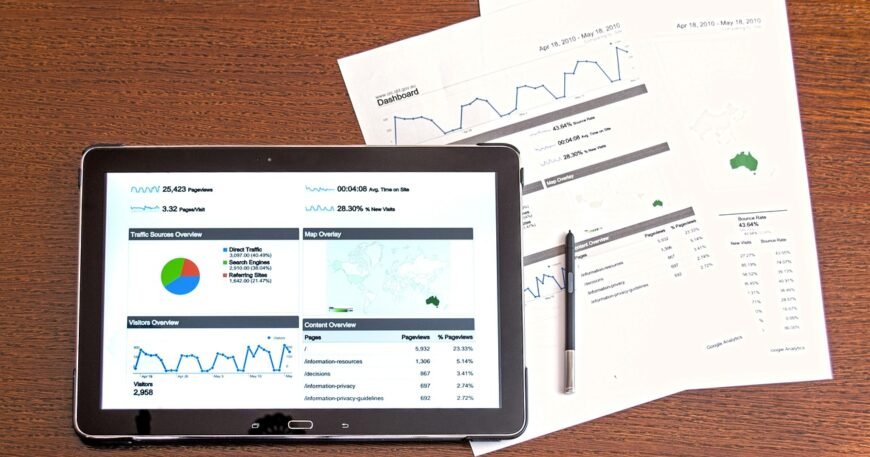Introduction
Financial reporting is a crucial aspect of any business, providing insights into financial health, helping in decision-making, and ensuring compliance with regulations. However, traditional financial reporting methods can be time-consuming, prone to errors, and resource-intensive. This is where automated financial reporting comes into play, revolutionizing the way businesses handle their financial data.
What is Automated Financial Reporting?
Definition and Explanation
Automated financial reporting refers to the use of software and technology to compile, manage, and present financial data. Unlike manual processes, which require significant human intervention, automated systems streamline these tasks, making financial reporting more efficient and accurate.
Evolution of Financial Reporting
Financial reporting has evolved significantly over the years. From manual ledger entries to the use of spreadsheets, and now to sophisticated software solutions, the journey has been marked by continuous improvements in accuracy, speed, and accessibility.
Key Features of Automated Financial Reporting
Real-time Data Processing
One of the standout features of automated financial reporting is real-time data processing. This means financial data is updated instantly, providing up-to-date information for decision-makers.
Integration with Existing Systems
Automated financial reporting tools often integrate seamlessly with other business systems, such as ERP (Enterprise Resource Planning) and CRM (Customer Relationship Management) systems, ensuring a smooth flow of data across the organization.
Customizable Reports
These tools offer customizable reporting options, allowing businesses to tailor reports to their specific needs. Whether it’s a detailed financial statement or a high-level summary, automated systems can generate reports that meet diverse requirements.
Enhanced Data Accuracy
Automation reduces the risk of human error, ensuring that financial data is accurate and reliable. This is crucial for maintaining the integrity of financial reports and making informed decisions.
Benefits of Automated Financial Reporting
Improved Efficiency
Automated financial reporting significantly enhances efficiency by reducing the time and effort required to compile and analyze financial data. This allows finance teams to focus on more strategic tasks.
Time Savings
With automation, tasks that once took hours or days can now be completed in minutes. This rapid turnaround is essential for timely decision-making and responding to market changes.
Cost Reduction
By minimizing the need for manual intervention and reducing errors, automated financial reporting can lead to substantial cost savings. It also reduces the reliance on external consultants or additional staff.
Enhanced Decision Making
Access to real-time, accurate financial data empowers businesses to make better-informed decisions. Whether it’s evaluating the financial impact of a new project or monitoring cash flow, automation provides the insights needed for strategic planning.
Better Compliance and Risk Management
Automated systems help ensure compliance with regulatory requirements by maintaining accurate records and generating reports that meet regulatory standards. They also aid in risk management by providing a clear view of financial health and potential issues.
Increased Data Security
Automation enhances data security by implementing robust access controls and encryption measures. This protects sensitive financial information from unauthorized access and breaches.
Scalability and Flexibility
Automated financial reporting solutions are scalable, making them suitable for businesses of all sizes. They can adapt to growing data volumes and changing reporting needs without significant additional investment.
Reduction of Human Error
Human error is a common issue in manual financial reporting. Automation minimizes these errors, ensuring that financial reports are accurate and trustworthy.
Enhanced Transparency
Automated systems provide a transparent view of financial data, allowing stakeholders to easily access and understand financial information. This transparency is vital for building trust with investors, regulators, and other stakeholders.
Implementing Automated Financial Reporting
Steps to Implement
- Assess Needs: Determine the specific needs of your organization and identify areas where automation can have the most significant impact.
- Choose the Right Tool: Select a financial reporting tool that aligns with your business requirements and integrates with existing systems.
- Plan and Prepare: Develop a detailed implementation plan, including timelines, resources, and training.
- Implement and Test: Deploy the chosen tool and conduct thorough testing to ensure it meets your needs.
- Monitor and Optimize: Continuously monitor the system’s performance and make necessary adjustments to optimize its effectiveness.
Best Practices
- Involve Key Stakeholders: Engage finance, IT, and other relevant departments in the implementation process.
- Provide Training: Ensure that staff members are adequately trained to use the new system.
- Set Clear Goals: Define clear objectives and KPIs to measure the success of the implementation.
Common Challenges and Solutions
- Data Integration Issues: Work with IT to ensure seamless integration with existing systems.
- User Resistance: Address concerns through training and communication about the benefits of automation.
- Technical Issues: Partner with reliable vendors who offer robust technical support.
Case Studies and Real-world Examples
Example 1: Large Corporation
A multinational corporation implemented automated financial reporting to streamline its global financial operations. The result was a significant reduction in reporting time and enhanced accuracy, enabling better decision-making at the executive level.
Example 2: Small Business
A small retail business adopted automated financial reporting to manage its finances more efficiently. The owner was able to generate detailed sales and expense reports quickly, helping to identify cost-saving opportunities and improve profitability.
Example 3: Non-profit Organization
A non-profit organization used automated financial reporting to enhance transparency and accountability. The system provided real-time financial insights, aiding in better resource allocation and donor reporting.
Future Trends in Financial Reporting Automation
AI and Machine Learning
Artificial intelligence and machine learning are set to revolutionize financial reporting. These technologies can analyze vast amounts of data, identify patterns, and provide predictive insights.
Blockchain Technology
Blockchain technology promises to enhance the security and transparency of financial reporting. By creating immutable records, it ensures the integrity of financial data.
Predictive Analytics
Predictive analytics can forecast financial trends and outcomes, providing businesses with valuable insights for strategic planning.
Conclusion
Automated financial reporting offers numerous benefits, including improved efficiency, cost savings, and enhanced decision-making. As technology continues to advance, the future of financial reporting looks promising, with AI, blockchain, and predictive analytics leading the way.
FAQs
What is automated financial reporting?
Automated financial reporting uses software to compile, manage, and present financial data, reducing the need for manual intervention.
How does automated financial reporting improve efficiency?
It streamlines the financial reporting process, reducing the time and effort required to compile and analyze data.
What are the risks associated with automated financial reporting?
While it offers many benefits, potential risks include data integration issues and technical challenges. However, these can be mitigated with proper planning and support.
Can small businesses benefit from automated financial reporting?
Yes, small businesses can benefit significantly from automation by saving time, reducing costs, and improving financial accuracy.
What technologies are driving the future of financial reporting automation?
Technologies such as AI, machine learning, blockchain, and predictive analytics are shaping the future of financial reporting.




